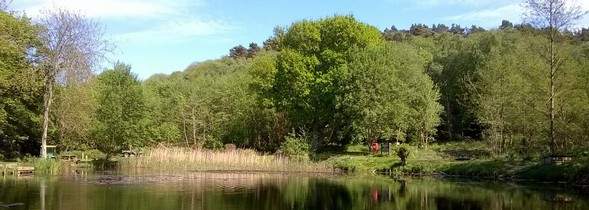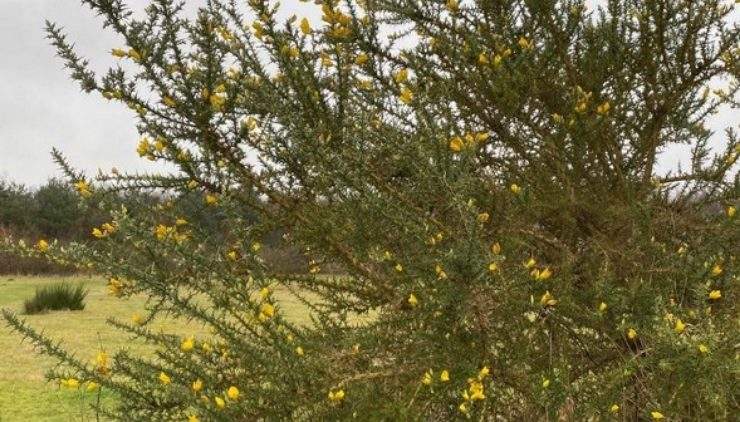Ponds update May 2017
- Categories:
- Nature

Bottom Pond - The Fishing Pond
The fishing pond is in a wonderful sheltered location and offers the perfect spot to sit and watch the wildlife.
With daylight hours lengthening, the pond plants are beginning to come into their own. The white lilies are a real feature. They have plenty of leaves and should begin to flower shortly. In the depths of the pond, the oxygenation plants are starting to show. The two varieties in the fishing pond are Milfoill and Potamageton Crispus. They offer cover for the fish and invertebrates, as well as helping to keep algae levels down and also oxygenate the water body.
We try to maintain good stocks of these plants but we are constantly managing this throughout the summer months as too much inhibits the fishing activities. The weed is managed by raking. It is left on the sides of the pond for up to 48 hours to allow any creatures to return to the water. It is then cleared and composted in the structure to the west of the pond. The weeds will grow quickly from now on but we tend to thin hard in the spring so that the resident fish can spawn on the weed in June. The plants will remain undisturbed until the fish eggs have turned into fry.The other main plant is the Norfolk Reed, this is growing rapidly and forms the reed bed at the East of the pond.
Now our winter tree work has been completed, we aim to allow the reed to grow along the south side of the pond with a view of creating a true conservation bank. People have been fishing the pond and results have been encouraging. It’s a great place for visitors to get a taste for angling.
The Top Conservation pond
With the marginal growth now established. This pond really comes into its own. Water levels have dropped but remain healthy. During the summer months capillary action combined with evaporation will cause the levels to fall, but we are collecting rainwater to help combat this.
The water lily in this pond is known as Brandy Bottle or Nuphur Lutea. It is extremely vigorous but provides cover for the sticklebacks and invertebrates and has significant aesthetic appeal. The pond is oxygenated by Milfoil. Generally speaking the pond is lightly managed through to autumn ensuring minimal disturbance.
Visitors to the pond this month will be able to view margins full of tadpoles, sticklebacks darting amongst the marginal greenery, diving beetles, damselfly larvae and dragonfly larvae will also be visible to patient observers.
For 2017 we are resting the top pond to give it time to recover from years of pond dipping activity and last winter’s extensive maintenance programme. This period of respite will enable this spectacular pond, once described by DavidBellamy as 'the best lowland pond I have seen in years', to fully recover.


